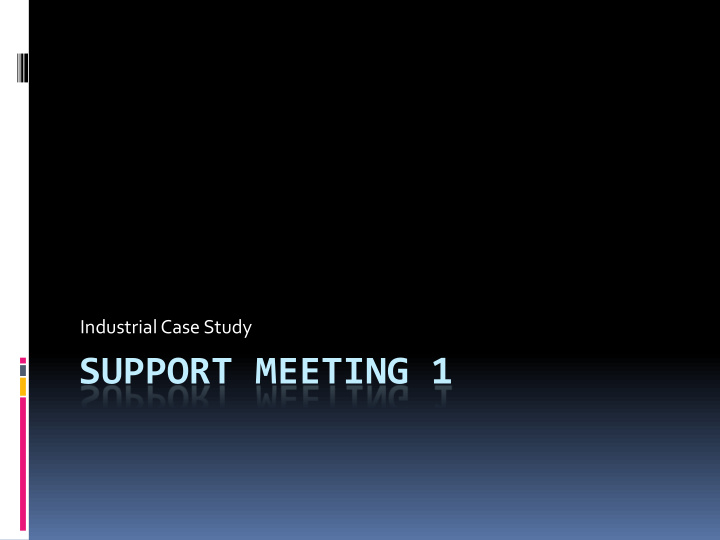



Industrial Case Study SUPPORT MEETING 1
Finding a company Eniro.se, google, emfas.se, trade organizations 1. (SAST.se), Press, Chalmers Careers Services -> För Chalmerister -> Söka arbetsgivare, etc Is it geographically possible? 2. Homepage 3. What do they do – is it something of interest for you? Software intensive? Multiple products? Make a short-list (10 companies - to keep 4. momentum) and prioritize Find contact information 5. Start making calls – see lecture 1 for guidance 6.
Terminology Companies terminology may differ from literature Be clear with what you mean – be pedagogic Be prepared
The company sets the context Which assessment method to use BAPO/PLPA? What level of commitment Often a matter of how good you are at selling the study and presenting yourself during the study – start small (two interviews - see lecture 1) In the end – aim for as much information as possible – are three interviews better than two – YES (if relevant)! Combined with documentation – even BETTER!
Groups Groups are set in stone unless You find someone that wants to switch with you Then inform Robert about the exchange In any other case – make the best of the situation This is a realistic situation – which implies that it offers significant opportunity for you to learn something relevant
Writing Write for your peers You do not need to go into details of the general part You need to provide details on everything that is specific to your study and particular case Be pedagogic – explain what you have done Use figures – and use them in your text e.g. as seen in figure 1 company X has two product that differ significantly on … Be clear and concise – write for the reader
References References to research findings are an essential part of any research paper The references should be used to strengthen your argument – and to show that you have done your homework Usually you summarize the research finding in your own words and then cite the source Example: Disciplined CM practices have shown to decrease defect rates by 10% in a case study by Svensson et al [2], in a company of similar size to the one in this study. Do not plagiarize – do not portrait others work as your own
References cont. Always acquire the original article (no pre/off-print) Check “trustworthiness” – peer reviewed? In what conference, workshop, journal is it published? Is the source peer-reviewed? Peer-review implies some level of quality/trustworthiness of the work Google scholar IEEE Explore ACM digital library www.engineeringvillage.com
The main points are Timeline that you need to start reading NOW and to start finding a Finding company NOW company First BAPO/PLPA? meeting Book interviews – when? Roles/participants What do we need? Correct Two interviews – Study design Data collection roles? design w. 49 w. 48 w. 50 w. 47 w. 46 w. 44 w. 45 Deadline Study design Deadline Company attainment
Design BAPO and PLPA is not really meant for out of the box use You need to carefully select what information to ask for … theory is most important in the design – it’s hard to fix a broken design after the execution is performed This includes Careful selection of Participants/roles Questions …
Design cont. Design for ideal case – scale down if needed Better to have a good design that is almost attained than a poor one that is perfectly executed (shit flows downstream) I.e. plan for interviews, document analysis etc. if you find it suitable Always have a plan Look at good examples Find examples in literature of process assessments that are similar to the one your doing – how do their designs look? Selection Questions
Interviews Too many interviewers might intimidate the interviewee One asking questions, one taking notes could be a good idea Ask if you can use a tape recorder – lessens the risk of missing important answers Assure them that the reporting of the findings will be anonymous
Interviews cont. Be prepared Prepared questions Topics covered in interview
Recommend
More recommend